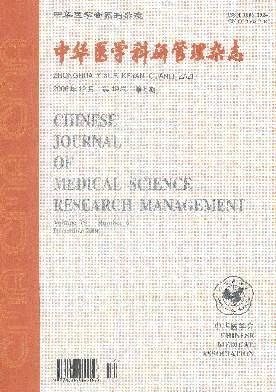Study on the relationship between the 2019 Novel Coronavirus Disease epidemic in China and population migration from Wuhan/ 中华医学科研管理杂志
引用次数: 4
Abstract
Objective@#To investigate the relationship between the epidemic of Coronavirus Disease in 2019 (COVID-19) in China and population migration from Wuhan before the city implemented strict migration restrictions.@*Methods@#We collected the cumulative number of confirmed cases with COVID-19 up to January 31, 2020 from the official website of the health administrative departments, and information on population migration out of Wuhan during January 10, 2020 and January 24, 2020, approximately half months prior to the implementation of strict migration restrictions by the city, from Baidu population-migration big data platform. Population migration data were provided for the top 100 cities in the form of percentage values, calculated as the number of migrants from Wuhan into these cities divided by the total number of migrants out of Wuhan during the same period multiplied by 100%. The two-independent sample non-parametric Wilcoxon rank-sum test was used to compare the distribution of cumulative number of cases between the top 100 cities and the remaining 205 non-top 100 cities of China. The relationship between the cumulative number of cases and the percentage of migrants from Wuhan into the top 100 cities were further assessed by Pearson correlation and by multiple linear regression with adjustment for population size, population density, and GDP per capita.@*Results@#The top 100 cities accounted for 91.6% of total migrants out of Wuhan, and the top 14 cities were all in Hubei province. There were a total of 5,869 cases in the top 100 cities, with a median (interquartile range) of 21.5 (12~55) cases, whereas in the 205 non-top 100 cities there were a total of 1,063 cases, with a median (interquartile range) of 4 (2~7) cases. The median cumulative number of cases differed significantly between the two types of cities (P<0.001). Among the top 100 cities, there was a strong correlation between the percentage of migrants from Wuhan and the cumulated number of cases (Pearson correlation coefficient=0.92), and for every 1 percentage point increase in migrants from Wuhan the cumulative number of cases increased by approximately 42 (95%CI, 39 to 45). The number of cumulative number of cases in Wenzhou and Chongqing was detected as potential outliers in regression diagnosis (P<0.001, corresponding standardized residuals were 5.2 and 3.5, respectively), suggesting that the number of cases in these two cities was substantially higher than others with similar amount of migrants from Wuhan.@*Conclusions@#There is a strong positive association between the percentage of migrants from Wuhan and the epidemic status of COVID-19 infections in cities in China.2019年中国新型冠状病毒病流行与武汉人口迁移关系研究
目的探讨2019年新冠肺炎疫情与武汉实施严格移民限制前人口流动的关系@*方法@#我们从卫生行政部门的官方网站收集了截至2020年1月31日的新冠肺炎累计确诊病例数,以及在武汉实施严格的移民限制前约半个月,即2020年1月份10日和2020年1月24日期间人口迁出武汉的信息,来自百度人口迁移大数据平台。以百分比值的形式提供了前100个城市的人口迁移数据,计算方法是从武汉进入这些城市的移民人数除以同期离开武汉的移民总数乘以100%。使用两个独立样本的非参数Wilcoxon秩和检验来比较中国前100名城市和其余205个非前100名的城市之间的累计病例数分布。通过Pearson相关性和多元线性回归,并对人口规模、人口密度和人均GDP进行调整,进一步评估了累计病例数与从武汉进入前100名城市的移民百分比之间的关系@*结果排名前100位的城市占武汉外来人口总数的91.6%,排名前14位的城市均在湖北省。前100名城市共有5869例病例,中位数(四分位数间距)为21.5例(12~55),而在205个非前100名的城市中,共有1063例病例,中值(四分位间距)为4例(2~7)。两类城市的中位累计病例数差异显著(P<0.001)。在前100名城市中,来自武汉的移民百分比与累计病例数之间存在很强的相关性(Pearson相关系数=0.92),来自武汉的移民每增加1个百分点,累计病例数就会增加约42例(95%CI,39至45)。在回归诊断中,温州和重庆的累计病例数被检测为潜在的异常值(P<0.001,相应的标准化残差分别为5.2和3.5),这表明这两个城市的病例数显著高于武汉移民数量相似的其他城市@*结论武汉外来人员比例与中国城市新冠肺炎感染流行状况呈强正相关。
本文章由计算机程序翻译,如有差异,请以英文原文为准。
求助全文
约1分钟内获得全文
求助全文

 求助内容:
求助内容: 应助结果提醒方式:
应助结果提醒方式:


